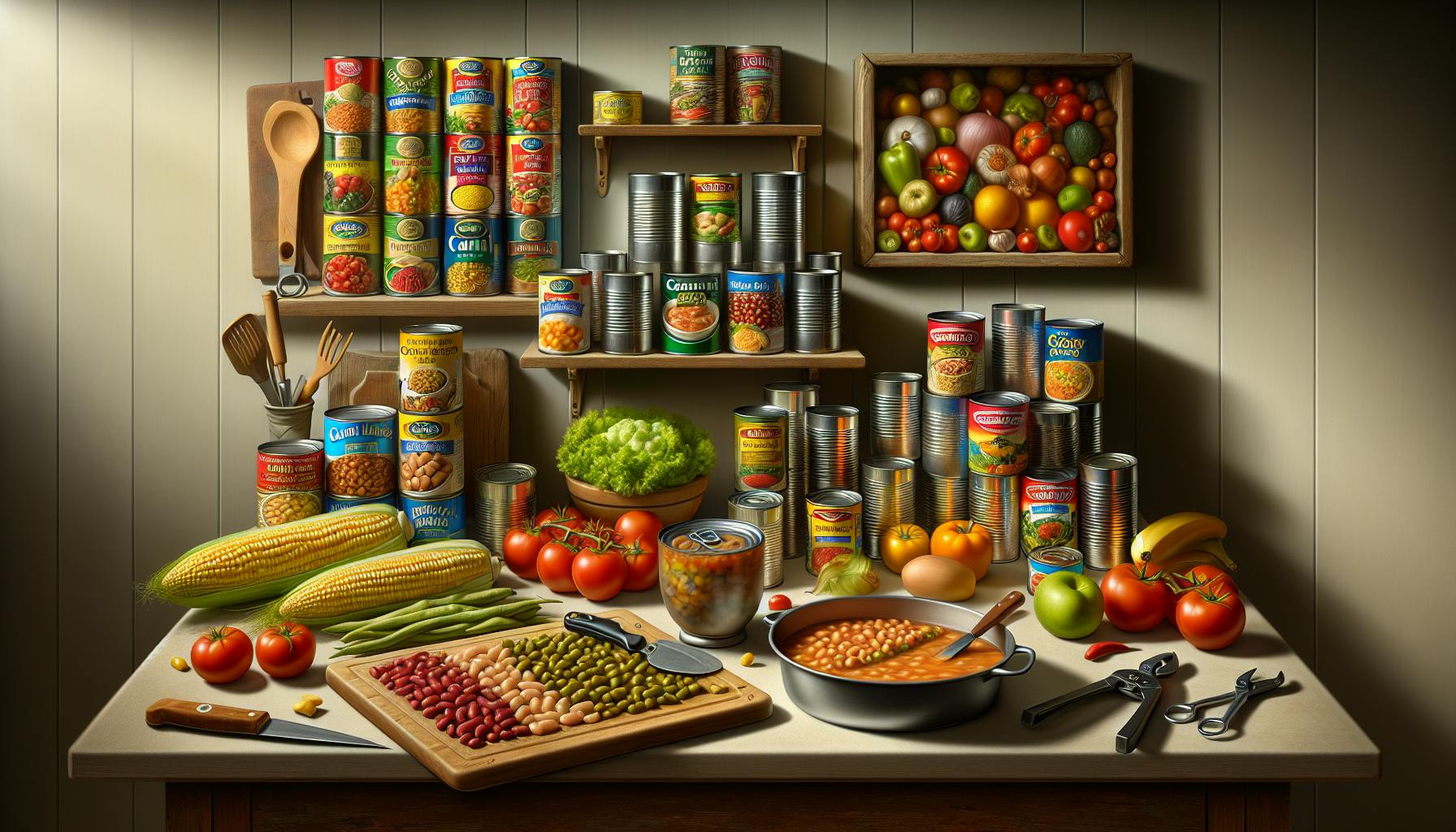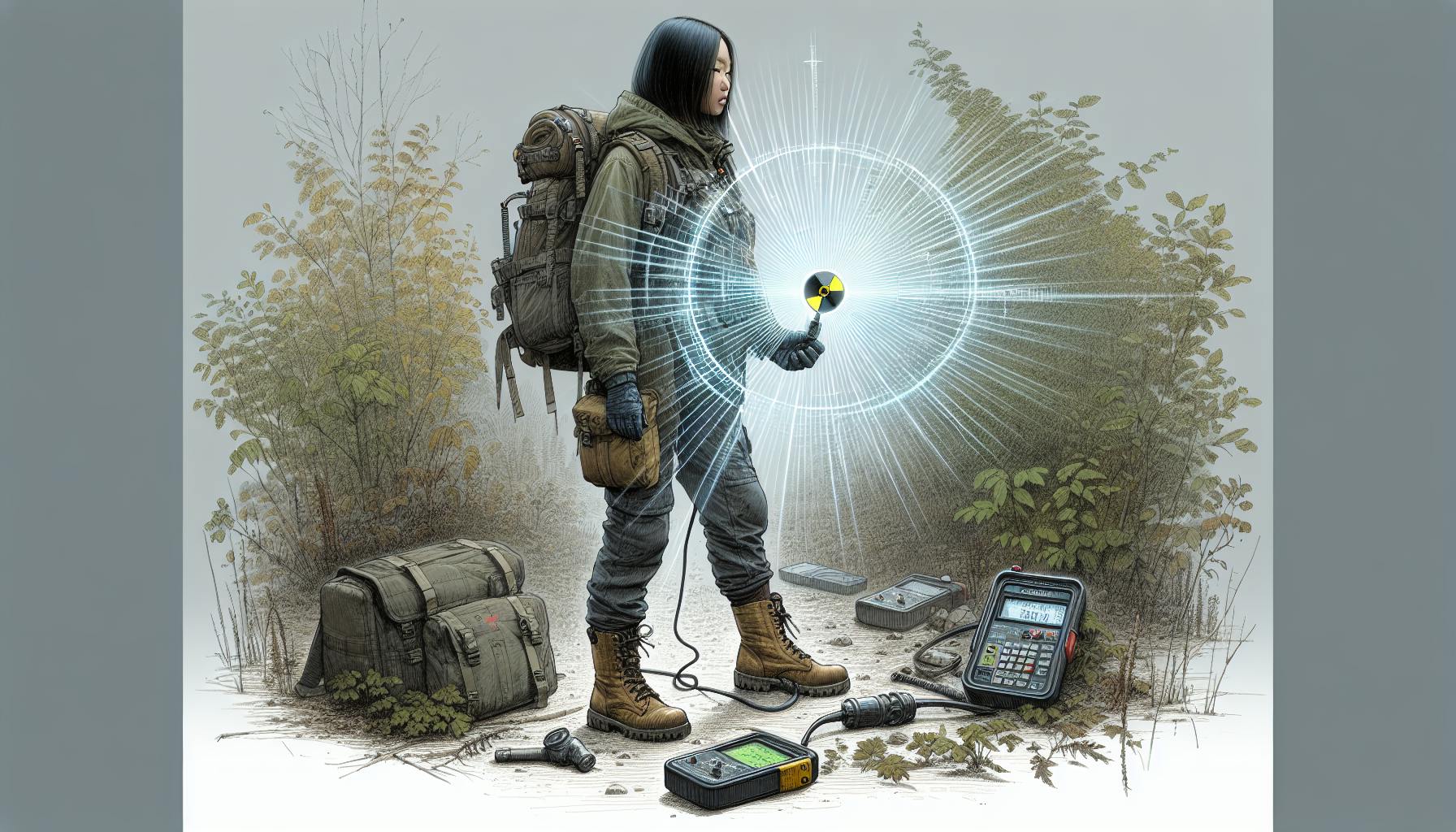When facing an emergency, having a well-organized bug out backpack can make all the difference in one's ability to survive and access critical gear.
This article will provide key strategies for optimizing compartmentalization and prioritization of equipment within a bug out bag, ensuring quick access to navigation tools, first aid, food, and other survival essentials when seconds count.
You'll learn principles for packing different categories of gear from self-defense items to fire-starting kits, along with reviews of top-rated bug out backpacks for individuals and families. With these tips, you can assemble the ultimate custom survival kit for your situation.
Equipping the Best Bug Out Backpack for Survival
Having the right bug out backpack can mean the difference between life and death in an emergency situation. When packing your bag, organization and prioritization are key to ensure quick access to critical gear.
Understanding the Best Bug Out Backpack for Survival
Choosing an emergency backpack designed specifically for survival scenarios is crucial. Key features include durability, sufficient capacity, modularity, and accessibility. Compartments should be strategically organized by priority - keep first aid, navigation tools, food, water, and shelter closest at hand. The best bags have MOLLE webbing and exterior pockets for rapid gear access. Lightweight bags under 50 lbs are ideal for mobility.
Common Mistakes in Bug Out Backpack Packing
Disorganization leads to wasted time rummaging when seconds count. Improper prioritization can be fatal - medical and survival tools must come first. Overpacking will weigh you down. Not understanding your gear means fumbling in an emergency. Take the time to thoughtfully organize and learn how to use every item.
The Ultimate Survival Kit: What Belongs in a Bug Out Bag
The ultimate bug out bag contains:
- First aid kit with trauma supplies
- Navigation/communication devices (map, compass, radio)
- 3 days food and water
- Emergency shelter (tent, sleeping bag, tarp)
- Fire making tools (lighter, matches, tinder)
- Multi-tools and knives
- Personal hygiene items
- Extra clothing and footwear
- Self defense items (mace, whistle)
- Cash
Customize your bag for your needs, skills and environment.
Selecting the Best Bug Out Bag 2023: Features and Innovations
Latest backpack advancements include hydration system compatibility, ripstop fabrics, customizable MOLLE panels, and tool-less disassembly for compact storage. Top brands like 5.11 Tactical leverage military-grade materials and field testing to engineer the most durable and practical designs. Key 2023 features are enhanced modularity, larger capacity, integrated rain covers, and concealed carry compatibility.
Invest in a quality backpack that fits your survival philosophy and needs. Organization is critical - compartmentalize and prioritize gear for quick lifesaving access in an emergency bug out.
What is the best bug out bag on the market?
When it comes to choosing the best bug out bag for your emergency preparedness needs, three options stand out from the rest:
Uncharted Supply Co. The Seventy2 Pro Survival System
The Seventy2 Pro is widely considered one of the best bug out bags on the market. It comes fully stocked with over 72 critical survival items including food, water, first aid supplies, navigation tools, and more. The bag features multiple compartments and pockets for organized storage as well as durable, waterproof construction to keep your gear protected. It's an excellent choice for those seeking a comprehensive, ready-to-go bug out bag.
Emergency Zone Stealth Tactical Bug-Out Bag
For those on a budget, the Stealth Tactical Bug-Out Bag from Emergency Zone is a great value option. Despite the low price point, you still get ample storage space and organization along with a robust carrying capacity. The bag comes packed with basic survival items like food, water, first aid, and tools. While it may lack some of the premium features of pricier models, it delivers good quality and essentials to cover your basic emergency preparedness needs.
Judy The Mover Max
If you're looking for an ultralight, versatile bug out bag, check out the Judy The Mover Max. It weighs just 2.2 lbs but can carry up to 44 lbs of gear. The slim, ergonomic design makes it comfortable to wear for extended periods. It works great as a transitional bag when you need to travel light and move quickly. With its durability and adaptability, Judy The Mover Max is among the best lightweight bug out bags available.
When shopping for the best bug out backpack, consider your budget, the features you need, and the type of scenarios you're prepping for. This will help narrow down the right bug out bag to meet your unique situation. Proper organization and compartmentalization of your gear is also key for quick access in an emergency.
What is the best size backpack for a bug out bag?
When preparing your bug out bag, choosing the right size backpack is crucial for comfort and practicality. The best size tends to fall in the 40-55 liter range (2,450-3,350 cubic inches). This capacity allows you to carry the necessary survival gear and supplies, while keeping the weight manageable.
For most people prepping a bug out bag, over 65 liters is more than what is needed and can become uncomfortably heavy. Under 35 liters could potentially limit how much you can bring and may force you to leave out important items.
A good way to estimate the size you need is to stuff a backpack you already own with blankets or pillows until it is full. Then measure the external dimensions. This will give you a reasonable starting point for shopping around.
The optimal size will vary based on your bug out plan, climate, number of people in your party, and other factors. But for most individual preppers, staying in the 40-55 liter "goldilocks zone" balances capacity and portability when bugging out.
What is the difference between a bug out bag and a go bag?
A bug out bag and a go bag serve similar purposes, but have some key differences.
A bug out bag is designed to sustain you for several days or longer in a survival situation. It contains gear and supplies like:
- Food rations and water filtration
- First aid supplies
- Tools like a knife, flashlight, fire starters
- Shelter items like a tent, sleeping bag, tarp
- Extra clothing suitable for the climate
Bug out bags help you safely evacuate an area and survive off-grid during an extended emergency like a natural disaster or societal collapse.
A go bag is more for short-term evacuation needs. It's lighter and more mobile focused on getting you out quickly. Go bags usually contain:
- Bottled water and high calorie snacks
- Flashlight, radio, batteries
- Basic first aid items
- Cash, copies of ID/documents
- Lightweight rain poncho
The idea is to grab your go bag and get to safety when you only have minutes to react - like during a home fire or active shooter situation.
So in summary:
- Bug out bags are for surviving away from conveniences.
- Go bags are for escaping immediate danger.
Prioritizing gear access and compartmentalization helps keep your lifesaving equipment ready in an emergency whether you grab a bug out bag, go bag, or tactical backpack.
How many days should a bug out bag last?
A well-stocked bug out bag should contain enough supplies to last 72 hours or 3 days. This timeframe allows you to evacuate from an emergency situation and make your way to a secure location or shelter where you can replenish your supplies.
When packing your bug out bag, focus on including gear and supplies that will meet your basic survival needs for 3 days:
- Water - Pack at least one gallon per person per day. Water filtration devices like Lifestraws or water purification tablets are essential backups.
- Food - Pack high-calorie, non-perishable foods like protein bars, dried fruits and nuts. MREs or freeze dried camping meals are great options.
- Shelter - Pack an emergency tent, tarp and sleeping bag rated for your climate. A bivvy sack also helps retain body heat.
- First Aid - Stock trauma supplies like bandages, ointments, medicines and tools to treat injuries for 3 days.
- Tools - Pack a knife, lighter, flashlight, paracord, duct tape and multi-tool. These support survival needs like making shelters, fire, light and repairs.
- Clothing - Choose versatile layers and sturdy footwear to protect you from the elements. Include extra socks, gloves, hat and rain poncho.
The key is packing smartly - choose compact, lightweight yet durable gear. Utilize organizational tools like removable pouches or compartments to enable quick access to items. Follow the "rule of 3s" for capacity based on 3 day usage. With preparation, your bug out bag can support critical survival needs in an emergency.
sbb-itb-b932644
Essential Features of the Best Bug Out Backpack
When selecting a bug out backpack, there are several key features to look for that can make a crucial difference in an emergency situation.
MOLLE Compatibility for Accessory Attachment
MOLLE (Modular Lightweight Load-carrying Equipment) webbing allows you to attach additional pouches and gear externally using carabiners or straps. Having a MOLLE-compatible backpack provides flexibility to add supplemental items you may need without taking up interior storage space.
Compartmentalization for Efficient Storage
Multiple large compartments with dividers allow you to organize gear efficiently. For example, you can designate compartments for food, shelter, first aid, tools, and other categories. This makes items easier to find when needed.
Durability and Comfort: Picking a Tactical Backpack
A tactical or military-grade backpack balances rugged materials like 1000D nylon with an ergonomic design for trekking long distances. Features like padded shoulder straps, sternum straps, and hip belts distribute weight to make carrying heavy loads more manageable.
Assessing Weight Distribution and Ergonomics
An internal frame backpack with a hip belt shifts more weight onto your hips rather than shoulders alone. This makes it easier to carry the backpack for extended periods without strain or fatigue. Carefully assess the position of shoulder straps, hip belts, and frame structure before selecting your bug out bag.
Prioritizing key features like MOLLE capacity, storage organization, durability, and ergonomic design in your bug out backpack can optimize your loadout for quick access and ease of transport in a crisis scenario. Field test your backpack and make any needed adjustments to the fit before an actual emergency strikes.
Compartmentalization and Prioritization of Gear
When organizing your bug out backpack, it's important to compartmentalize key categories of gear for quick access in an emergency. Core gear groups to separate into sections include:
Navigation and Communications for Quick Access
Having your navigation tools like a map, compass, and GPS readily available can mean the difference between life and death when disaster strikes. You'll also want to store your emergency communication devices like a radio in an easily accessible spot. Consider dedicating a top section or exterior pocket to these crucial items.
First Aid Supplies at the Ready
Injuries are almost inevitable in emergency scenarios. Make sure to have a dedicated first aid kit section in your bag, fully stocked with essentials like bandages, ointments, medications, etc. This allows you to swiftly address medical issues on the go.
Prioritizing Gear: The Essentials for Survival
When packing your bug out bag, you'll need to prioritize gear that is vital for short-term survival - this includes shelter, fire, food, water, self-defense items, and other fundamentals. Place these essentials in spots that are quickest to reach in your bag. Less critical gear can go into harder-to-access areas.
Emergency Systems Bug Out Bag: A Case Study
The Emergency Systems bug out bag provides an excellent case study for compartmentalized, priority-based organization. It has a front-loading design with multiple storage areas based on gear function. For instance, the main compartment houses shelter and food, side pockets hold navigation/communication and first aid gear, while the bottom section stores fire-starting and self-defense items. This allows rapid access to the most crucial survival equipment.
By properly compartmentalizing and prioritizing gear in key categories, your bug out backpack will enable you to effectively respond to any emergency situation.
Curating the Ultimate Bug Out Backpack List
When preparing your bug out backpack, organization is key for quick access to critical gear in an emergency. Here are some tips on compartmentalizing and prioritizing items.
Self-Defense and Weapons Placement
- Keep pepper spray and knives in exterior pockets for rapid access. Be mindful of local laws.
- Use interior pouches to securely store firearms and ammunition. Quick access is vital.
Fire Making Capabilities Within Reach
- Pack waterproof matches, a lighter, and fire starter in multiple exterior zipper pockets.
- Include backup stormproof matches in case primary fire sources fail.
- Place tinder in the same exterior pockets to start fires quickly. Good options: wax-soaked cotton balls, dryer lint.
Survival Food: Packing for Sustenance
- Pack high-calorie protein bars and dried fruits in exterior pockets for immediate energy.
- Store additional freeze-dried meals and MREs in main compartments to sustain you longer term.
- Bring a compact mess kit to prepare food and boil water.
Customizing Your Bug Out Bag Kit
- Consider your climate and likely scenarios. Desert? Snow?
- Pack region-specific gear like snowshoes or water filtration as needed.
- Tailor medical supplies to personal health conditions.
Strategic organization is vital in a crisis. Compartmentalize into exterior and interior storage based on urgency of need.
Best Bug Out Bag Kits for Individual and Family Preparedness
When selecting a bug out bag, organization and capacity are key for quick access to gear in an emergency. Here are some top-rated bug out backpacks designed for compartmentalization and family preparedness.
Survival Systems Elite Bug Out Backpack
The Survival Systems Elite backpack features ample MOLLE attachment points and storage compartments to keep gear secure and organized. The spacious main compartment can fit several days' worth of food, water, and other essentials. Side pouches provide quick access to items like flashlights, multi tools, and first aid kits. With an elite name to match, this bag delivers when compartmentalization for rapid deployment counts most.
Emergency Zone Urban Survival Bug Out Bag
As the name suggests, this affordable bug out bag from Emergency Zone gears up city dwellers to evacuate at a moment's notice. The backpack can store the recommended 3-day supply of food, water, and other urban survival basics across thoughtfully designed compartments and pockets. As a top pick for the budget-conscious, this bag offers ample space to compartmentalize your most critical items for a speedy city escape.
Best Bug Out Bag for Family: Features and Capacity
When prepping for a family, significantly more gear and supplies are required. Prioritize backpacks with extra capacity, versatile storage options, and durability to withstand heavy loads. Key features that accommodate families include expandable compartments, detachable packs, and specialized access ports for things like baby bottles. The best family bug out bags have space for everyone's critical items while keeping them neatly organized via pockets, dividers, and attachment points.
Everlit Emergency Bug Out Bag Review
The Everlit Emergency bug out bag provides versatile storage options across compartments and external pockets to organize gear for different situations. The spacious main compartment utilizes divider panels to separate and identify key items like first aid kits, food rations, flashlights, and multi tools. Front and side pockets offer quick access for essentials you may need on the fly. Made with durable, water-resistant fabrics, Everlit's bags are suitable for wilderness and urban evacuations alike.
Final Tips for Packing Your Bug Out Bag
When preparing your bug out bag, it's important to balance weight limits, test your gear, rotate stock, and deliberately place items for efficiency. Here are some final tips:
Weigh Your Packed Bag and Adjust
Aim for a packed weight of 25-30 lbs. Heavier than that and you risk injury or fatigue after miles of hiking. Remove non-essentials until reaching your ideal weight.
Make an Itemized List and Map Inside
Document each item and its exact placement in your bag. This allows for quick retrieval without searching blindly. Use a checklist to indicate when items need replacement.
Regularly Rotate and Update Your Survival Kit
Check expiration dates every 6 months. Replace food, water, medicine, and gear that may expire or degrade over time. This ensures freshness and readiness.
Practice Drills: Familiarity Breeds Efficiency
Conduct regular practice drills unpacking key items from your bag. Doing so ingrains muscle memory and efficiency for when seconds count in an emergency.


